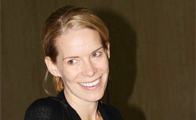One of the most important skills for a Pilates instructor is being able to “read” the body in front of them.
That’s the skill that will let you help your clients the most.
That’s the skill that separates Pilates from regular fitness modalities.
And that’s the same skill that can take years to develop.
Completing a Pilates certification program doesn’t mean that you will develop that skill right away. It must be fostered, worked on and developed every day. And the instructor that you train with has an incredible influence of how fast you will develop your “eye”.
I was lucky to start my Pilates training under Jennifer Gianni’s mentorship and she taught me to “read” the body in front of me.
And that’s just one of the “secrets” that she shares with us in an exclusive interview for the Pilates Bridge members.
Jennifer Gianni, a Master Pilates teacher, Balanced Body Faculty member, creator of the Fusion Pilates Pre/Postnatal DVDs who has over 20 years of experience in the mind/body field. She is also the creator of the Pre/Postnatal Pilates Certification program that she’s been teaching in her home studio in Asheville as well as across the USA and in Japan.
Jennifer’s profile on Pilates Bridge
Questions discussed in the interview:
- How to develop the “Pilates eye”;
- The best piece of advice for any beginner teacher;
- the pros and cons of being a studio owner as opposed to being an independent contractor;
- how to know when you are ready to open your studio;
- the best Pilates exercises for the modern sedentary lifestyle;
- the future of the Pilates Method.



